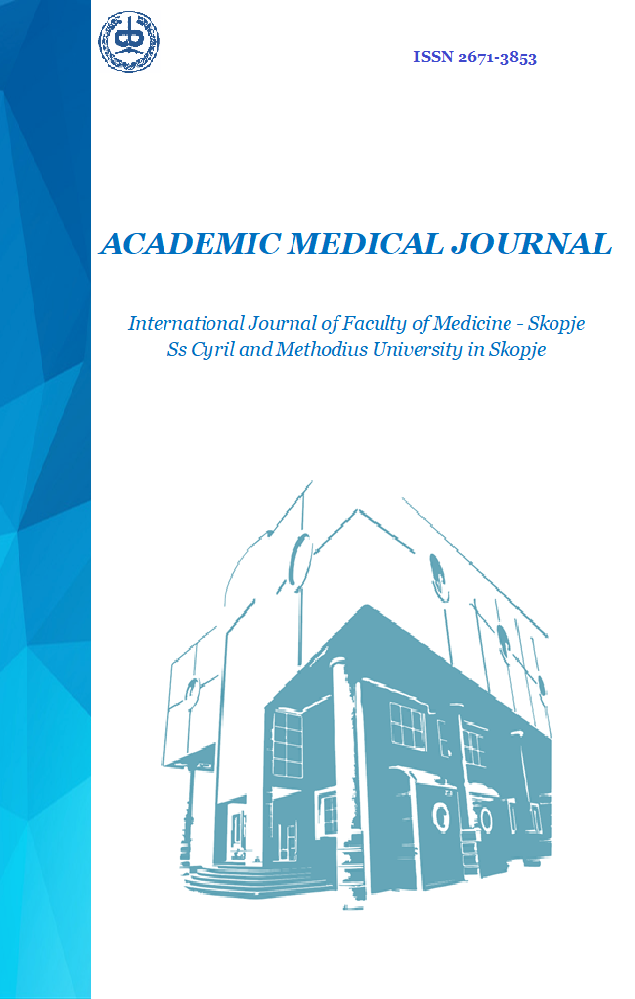QANTITATIVE ANALYSIS OF THE EFFICACY OF TREATMENT WITH NEUROFEEDBACK METHOD IN PATIENTS WITH AFFECTIVE DISORDERS
Keywords:
affective disorders, neurofeedback, allternative treatmentAbstract
Introduction: Depression affects approximately 300 million people globally, with about 5% of adults experiencing an episode each year, making it a major public health concern.
The main goal of this study was to measure the effectiveness of the combined treatment of the neurofeedback method and antidepressants in the treatment of patients diagnosed with affective disorder.
Results: The study revealed a significant reduction in depressive symptoms in the SG compared to the CG. At baseline, both groups had similar BDI scores (18.88±5.8 in SG vs. 21.0±8.7 in CG; p=0.15). However, by the second follow-up, the SG exhibited a statistically significant improvement (BDI: 16.80±5.7 vs. 20.56±8.8; p=0.013), pointing towards a 11.02% score reduction in the SG compared to a 2.09% in the CG. This trend continued throughout the study, with the final assessment showing a mean BDI score of 13.14±5.9 in the SG versus 19.58±8.2 in the CG (p=0.00002). As for the CGI scale, a greater reduction in the total CGI scale score was recorded at the second assessment in the SG (12.15%), compared to the CG (2.46%), confirming the faster treatment response with the combined treatment approach. The CGI scores indicated greater clinical improvement in the SG, with a mean CGI score of 7.34±2.4 compared to 9.54±2.5 in the CG (p=0.000016) at the final assessment.
Conclusion: The combined treatment encompassing neurofeedback training and antidepressant therapy demonstrated superior efficacy in reducing depressive symptoms compared to antidepressant monotherapy.
References
World Health Organization. Depressive disorder (depression). WHO. Available from: https://www.who.int/news-room/fact-sheets/detail/depression. Accessed 2024 Nov 10.
Shelton RC, Tollefson GD, Tohen M, Stahl S, Gannon KS, Jacobs TG, et al. A novel augmentation strategy for treating resistant major depression. Am J Psychiatry 2001; 158(1): 131-134. doi: 10.1176/appi.ajp.158.1.131.
Herrman H, Patel V, Kieling C, Berk M, Buchweitz C, Cuijpers P, et al. Time for united action on depression: A Lancet-World Psychiatric Association Commission. Lancet 2022; 399(10328): 957-1022. doi: 10.1016/S0140-6736(21)02141-3.
Ettman CK, Abdalla SM, Cohen GH, Sampson L, Vivier PM, Galea S. Prevalence of Depression Symptoms in US Adults Before and During the COVID-19 Pandemic. JAMA Netw Open 2020; 3(9): e2019686. doi: 10.1001/jamanetworkopen.2020.19686.
Albert P. Why is depression more prevalent in women? J Psychiatry Neurosci 2015; 40(4): 219-221. doi: 10.1503/jpn.150205.
Alonso J, Angermeyer MC, Bernert S, Bruffaerts R, Brugha TS, Bryson H, et al. Prevalence of mental disorders in Europe: results from the European Study of the Epidemiology of Mental Disorders (ESEMeD) project. Acta Psychiatr Scand Suppl 2004; (420): 21-27. doi: 10.1111/j.1600-0047.2004.00327.x.
Heo M, Murphy CF, Fontaine KR, Bruce ML, Alexopoulos GS. Population projection of US adults with lifetime experience of depressive disorder by age and sex from year 2005 to 2050. Int J Geriatr Psychiatry 2008; 23(12): 1266-1270. doi: 10.1002/gps.2061.
U.S. Food and Drug Administration. Center for Drug Evaluation and Research. Major depressive disorder: Developing drugs for treatment. Silver Spring: U.S. Food and Drug Administration; 2018.
European Medicines Agency. Clinical investigation of medicinal products in the treatment of depression: scientific guideline. Amsterdam: European Medicines Agency; 2018.
McIntyre RS, Alsuwaidan M, Baune BT, Berk M, Demyttenaere K, Goldberg JF, et al. Treatment-resistant depression: Definition, prevalence, detection, management, and investigational interventions. World Psychiatry 2023; 22(3): 394-412. doi: 10.1002/wps.21120.
Zhdanava M, Pilon D, Ghelerter I, Chow W, Joshi K, Lefebvre P, et al. The prevalence and national burden of treatment-resistant depression and major depressive disorder in the United States. J Clin Psychiatry 2021; 82(2): 20m13699. doi: 10.4088/JCP.20m13699.
Xia Z, Yang PY, Chen SL, Zhou HY, Yan C. Uncovering the power of neurofeedback: a meta-analysis of its effectiveness in treating major depressive disorders. Cereb Cortex 2024; 34(6): bhae252. doi: 10.1093/cercor/bhae252.
Patil AU, Lin C, Lee SH, Huang HW, Wu SC, Madathil D, et al. Review of EEG-based neurofeedback as a therapeutic intervention to treat depression. Psychiatry Res Neuroimaging 2023; 329: 111591. doi: 10.1016/j.pscychresns.2023.111591.
Cheon EJ, Koo BH, Choi JH. The Efficacy of Neurofeedback in Patients with Major Depressive Disorder: An Open Labeled Prospective Study. Appl Psychophysiol Biofeedback 2016; 41(1): 103-110. https://doi.org/10.1007/s10484-015-9315-8.
Wang SY, Lin IM, Peper E, Chen YT, Tang TC, Yeh YC, et al. The efficacy of neurofeedback among patients with major depressive disorder: Preliminary study. NeuroRegulation 2016; 3(3): 127-134. doi: https://doi.org/10.15540/nr.3.3.127
Lee YJ, Lee GW, Seo WS, Koo BH, Kim HG, Cheon EJ. Neurofeedback Treatment on Depressive Symptoms and Functional Recovery in Treatment-Resistant Patients with Major Depressive Disorder: an Open-Label Pilot Study. J Korean Med Sci 2019; 34(42): e287. doi: 10.3346/jkms.2019.34.e287.
Wang YP, Gorenstein C. Psychometric properties of the Beck Depression Inventory-II: a comprehensive review. Braz J Psychiatry 2013; 35(4): 416-431. doi: 10.1590/1516-4446-2012-1048.
Berk M, Ng F, Dodd S, Callaly T, Campbell S, Bernardo M, et al. The validity of the CGI severity and improvement scales as measures of clinical effectiveness suitable for routine clinical use. Journal of evaluation in clinical practice 2008; 14(6): 979-983. doi: 10.1111/j.1365-2753.2007.00921.x.
Latas M, Stefanovski B, Mihaljević-Peleš A, Memić Serdarević A, Pajević I, Radulović NZ, et al. Diagnostic psychiatric and somatic comorbidity in patients with depression in the Western Balkan countries. PLoS ONE 2024; 19(1): e0295754. doi: 10.1371/journal.pone.0295754.
Lee YJ, Kim S, Lee WK, Choi J. Neurofeedback treatment on depressive symptoms and functional recovery in treatment-resistant patients with major depressive disorder: An open-label pilot study. J Korean Med Sci 2019; 34(42): e287. doi: 10.3346/jkms.2019.34.e287.
Liu H. Neurofeedback training intervention for persons with major depression disorder: Reducing depressive symptoms. NeuroQuantology 2017; 15(3): 179-184. doi: 10.14704/ nq.2017.15.3.1091.
Dobbins ICS, Bastos M, Ratis RC, Silva WCFND, Bonini JS. Effects of neurofeedback on major depressive disorder: a systematic review. Einstein (Sao Paulo) 2023; 21: eRW0253. doi: 10.31744/einstein_journal/2023RW0253.
Downloads
Published
Issue
Section
License
This work is licensed under CC BY 4.0 





